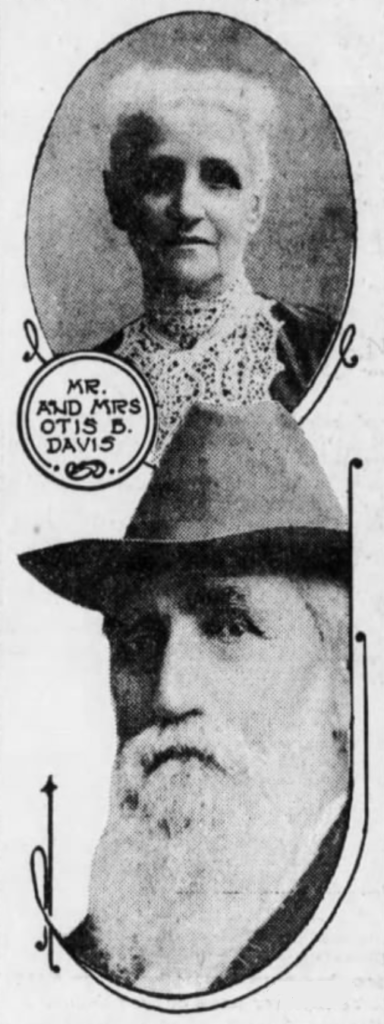Skip to content
Davis Family Left Its Mark on Dvoor Farm — Part 2
Consider Hunterdon County around 1871. Take away the supermarkets, fast food joints and gas stations. Strip away the strip malls and four-lane highways that cleave the county. Clamber aboard a two-seated family carriage — a compact conveyance in which the knees of both driver and passenger would smack against the dashboard — for the journey to the stone farmhouse.
The unpaved roads can best be described as haphazard. Perhaps Otis had heard about the time in May 1868 when the muck was so deep on one Raritan Township road that a horse broke its back. As the carriage lurches toward the farm, there’s no traffic circle, but a road that bends north and east from Sergeantsville to Flemington. We aren’t sure which barns you would have seen riding up the incline toward the old Case family farmstead, but the Horse, Bank and Ell barns, and the farm office had not yet been built.
Otis arrived at the farm expecting to die soon.
Physicians had diagnosed Otis with consumption (tuberculosis), the leading cause of death in the United States between 1870 and 1910, when it killed three to four million Americans. Victims suffered from hacking, bloody coughs, and debilitating pain in their lungs.
Almost 50 years later, Otis shared a laugh about that prognosis with a young Brooklyn Eagle newspaper reporter covering the Davis’s 60th wedding anniversary party.
On May 19, 1871, Moses conveyed the farm and a lease for three adjoining houses to the Davis’s. Though Otis may have been thinking about the grave, he evidently wasn’t going to let the grass grow beneath his feet. He got busy building several outbuildings to support his dairy business, including the large Bank and perpendicular Ell barns and wagon house, which all still exist. The Davis’s also worked on the interior of the farm house, removing a wall between two downstairs living areas to create one large room to the left of the front entrance.
Taking advantage of the farm’s streamside meadows and nearness to Flemington’s train station, by 1880 Otis had, by a wide margin, established the largest dairy operation in Raritan Township. The 1880 agricultural census records that the farm consisted of 70 acres of tilled land; 30 acres of permanent meadows, pastures and newly planted orchards; and three acres of woodlands. Otis had a herd of 30 cows producing 23,000 gallons of “milk sold or sent to butter and cheese factories” in 1880.
As if that weren’t enough, the farm produced 60 tons of hay from 40 acres mown, 100 bushels of corn from 10 acres planted, 90 bushels of oats from six acres, eight bushels of wheat from 12 acres and 10 bushels of potatoes. The three-acre orchard had 100 apple-bearing trees. Otis’s livestock included 30 “calves dropped,” two horses, two mules, four swine and 50 barnyard fowl.
By 1888, Otis appears to have cleared all his farmland except for a small patch of woods known as the Old Growth Forest at the intersection of Route 12 and Old Croton Road.
Otis also became a pillar of the community. He joined Darcy Lodge No. 37, Free & Accepted Masons in Frenchtown, and soon became an officer. He hosted picnics for the Croton Baptist Sabbath Sunday School. During the 1880s, he was very active in the Hunterdon County Agricultural Society, serving a number of roles on its fair committee, including superintendent of the sheep and swine departments.
On March 14, 1898, the Davis’s were entertaining long-time friends Joseph and Mary Pressey at their farmhouse, when Otis pulled out a sheaf of papers. “I’ve been making my will, and I want you to witness it,” he told them, laying the papers upon the dining room table. Not surprisingly, Otis left all of his assets to his wife.
Old age was creeping up on Otis, who continued to run the farm for another decade. His son had left years ago, embarking on a prestigious military career, beginning service in 1880 as a private in Company A of the 13th Regiment, Coast Artillery, and rising to colonel commanding the 13th. This left the Davis’s by 1900 living on the farm with two servants, Edward Berger and his wife, Catherine.
In 1910, the Davis’s sold the farm to Gregor Moser, and moved to Brooklyn to be closer to their son. They likely settled into the Hotel St. George. In 1913, 83-year-old Otis accompanied his son to Bermuda, returning before year’s end on the S.S. Bermudian. Otis returned to Hunterdon County too, visiting friends in Flemington. A photo taken around this time shows Otis with a long beard that would have looked appropriate on a box of cough drops.
He was in robust health until the end. He passed away at the Hotel St. George on Feb. 21, 1918, and is buried at Brooklyn’s Greenwood Cemetery. “He was progressive in farming, a man of much intelligence and refinement,” the Hunterdon Democrat lauded upon his passing. “Farming was more of a pastime than an occupation, but with his use of intelligent methods he always made it a successful pastime.”
Otis’s beloved Lizzie followed him to the grave on Jan. 26, 1931.
Share This Story, Choose Your Platform!
 If you missed Part 1 of our story, please go here!
If you missed Part 1 of our story, please go here!